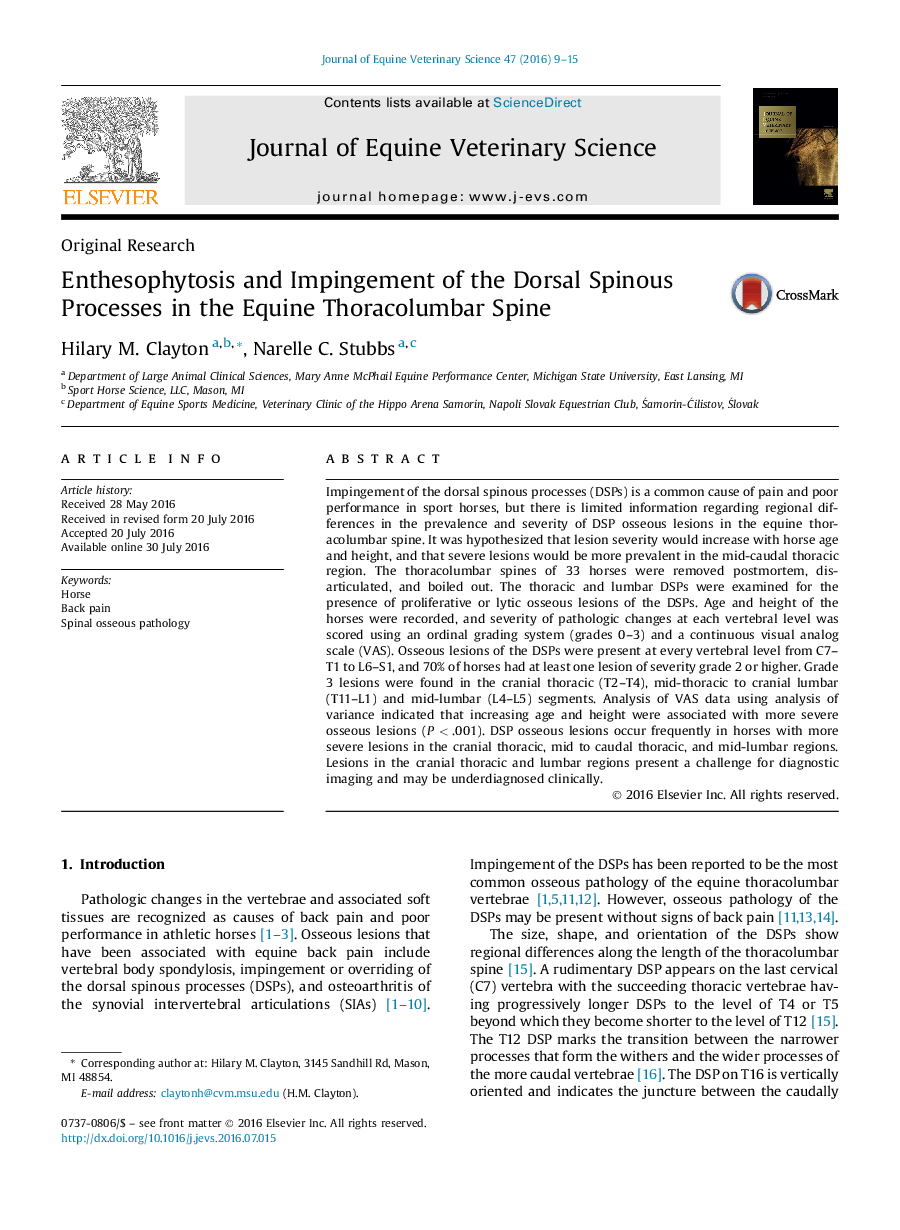| کد مقاله | کد نشریه | سال انتشار | مقاله انگلیسی | نسخه تمام متن |
|---|---|---|---|---|
| 2394315 | 1551553 | 2016 | 7 صفحه PDF | دانلود رایگان |
• Osseous lesions of the thoracolumbar dorsal spinous processes were graded at necropsy in 33 horses.
• Seventy percent of horses had at least one lesion that was graded moderate or severe.
• The most severe lesions were present between T2 to T4, T11 to L1, and L4 to L5.
• Lesion severity increased with horse age and height.
• Lesion severity in the mid-caudal thoracic spine may be exacerbated by spinal lordosis when ridden.
Impingement of the dorsal spinous processes (DSPs) is a common cause of pain and poor performance in sport horses, but there is limited information regarding regional differences in the prevalence and severity of DSP osseous lesions in the equine thoracolumbar spine. It was hypothesized that lesion severity would increase with horse age and height, and that severe lesions would be more prevalent in the mid-caudal thoracic region. The thoracolumbar spines of 33 horses were removed postmortem, disarticulated, and boiled out. The thoracic and lumbar DSPs were examined for the presence of proliferative or lytic osseous lesions of the DSPs. Age and height of the horses were recorded, and severity of pathologic changes at each vertebral level was scored using an ordinal grading system (grades 0–3) and a continuous visual analog scale (VAS). Osseous lesions of the DSPs were present at every vertebral level from C7–T1 to L6–S1, and 70% of horses had at least one lesion of severity grade 2 or higher. Grade 3 lesions were found in the cranial thoracic (T2–T4), mid-thoracic to cranial lumbar (T11–L1) and mid-lumbar (L4–L5) segments. Analysis of VAS data using analysis of variance indicated that increasing age and height were associated with more severe osseous lesions (P < .001). DSP osseous lesions occur frequently in horses with more severe lesions in the cranial thoracic, mid to caudal thoracic, and mid-lumbar regions. Lesions in the cranial thoracic and lumbar regions present a challenge for diagnostic imaging and may be underdiagnosed clinically.
Journal: Journal of Equine Veterinary Science - Volume 47, December 2016, Pages 9–15
